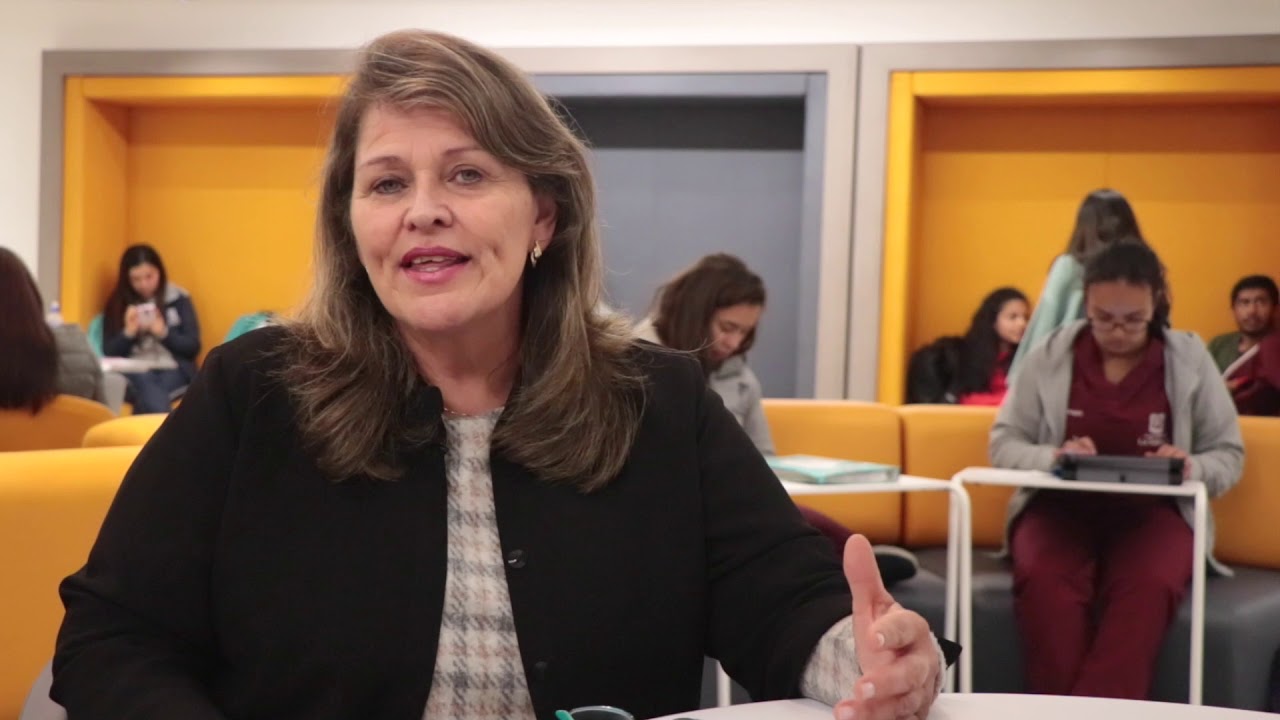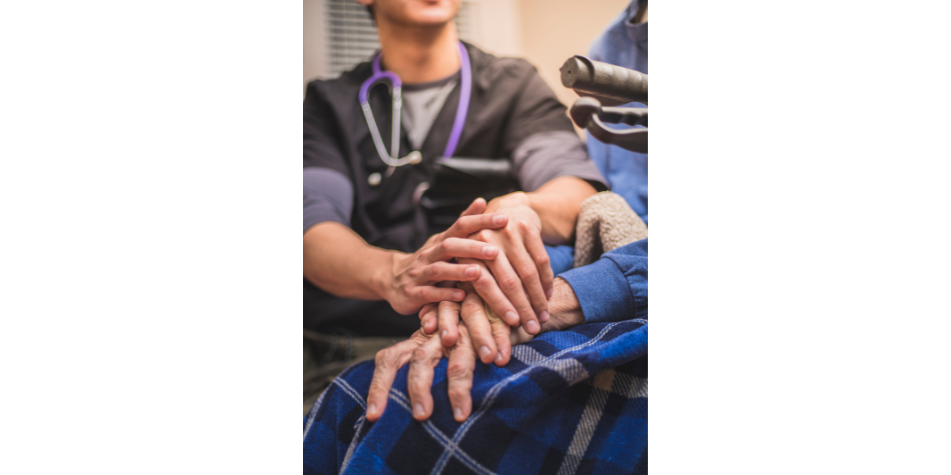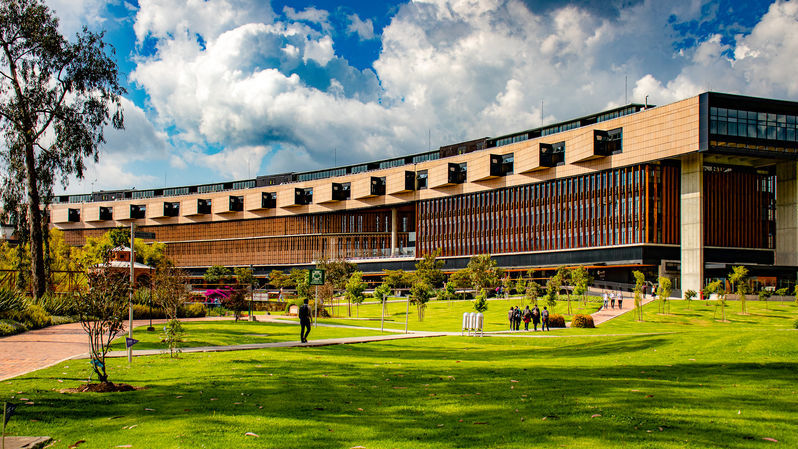Eleven years after Law 1733, palliative care remains out of reach for millions: Colombia's outstanding debt to a dignified end of life

More than a decade ago, Law 1733 of 2014—known as the Consuelo Devis Saavedra Law—promised to guarantee the right of every Colombian to receive palliative care: medical, psychological, and spiritual care aimed at alleviating the suffering of those facing a chronic or terminal illness. However, eleven years later, indicators from the Colombian Observatory of Palliative Care show that coverage remains unequal, limited, and profoundly inequitable.
“Colombia has a wealth of resources that support the development and integration of palliative care. There are public policies and specialized services, but they are insufficient. The rate is 0.2 services per 100,000 inhabitants, compared to the global rate of 2 services per 100,000,” warns Dr. Marta Ximena León, head of the Department of Anesthesia, Pain, and Palliative Care at the University of La Sabana.
The regional contrast is overwhelming: while in Bogotá there are 1.5 services per 100,000 inhabitants, in departments like Guainía, Vichada, Vaupés, and Amazonas the figure is zero. These are areas where pain and death are experienced in solitude, without professional support or available medication.
"These are regions that are completely unprotected," adds Dr. León. "If a cancer patient in Vichada needs a procedure, they must travel to Bogotá. The costs of this travel fall on the system, but above all, on their dignity."

Marta Ximena León, head of the Department of Anesthesia, Pain, and Palliative Care at Unisabana. Photo: University of La Sabana
Access to palliative care is largely determined by the healthcare infrastructure and professional capacity of the regions. Although the law guarantees that any patient can access it at any stage of their illness, lack of awareness and regional gaps make this right a distant promise.
According to the Observatory, 70% of Colombians with terminal illnesses die without receiving palliative care. This figure not only reflects a structural gap, but also an ethical debt to the most vulnerable: those living on the outskirts, those who cannot afford transportation, and those who cannot find trained doctors in their own country.
Dr. León insists that one of the greatest challenges is training healthcare personnel capable of caring for patients in the most remote areas. Currently, only 11% of medical programs include training in palliative care; in nursing, the percentage rises to 27%. There are ten specialization programs in medicine and three in nursing, but they still fail to meet national demand.
“In the field of education, we still have a lot of work ahead of us,” León acknowledges. “Although there is undergraduate and graduate training, we are still short. It is essential to train professionals who can bring relief to where it is most needed.”

Palliative care aims to offer dignity to the patient. Photo: iStock
One of the pillars of palliative care is pain control. But, paradoxically, in Colombia, relief is also concentrated in cities. Since 2016, Circular 022 has guaranteed the availability of opioids 24 hours a day, seven days a week. However, in practice, access remains unequal and limited.
“Colombia's consumption rate was 6.5 milligrams per capita per year, reported in 2020, below the global average. The availability of pain management medications is low and concentrated in large cities,” León explains.
The Observatory's figures confirm the gap: while Bogotá records a per capita consumption of 18.12 milligrams, in departments such as Amazonas, Vichada, and Putumayo, consumption barely reaches 0.2 milligrams. The statistics not only speak of a supply problem, but also of a country where the pain depends on the postal code.
Amidst this national debt, the Faculty of Medicine of the University of La Sabana has become a key player in transforming the situation. For two decades, it has promoted training in palliative care as an essential discipline in medical practice.
“Approximately ten years ago, the Palliative Care program began, one of the first in Colombia, focused on training physicians in primary care,” explains Dean Álvaro Romero. “This program responds to the need for specialists who can mitigate pain and ensure quality of life until natural death.”

University of La Sabana. Photo: University of La Sabana
The university has also been a driving force in the formulation of public policy. It participated in the drafting of the Palliative Care Law and in the creation of the National Palliative Care Observatory (2016), together with the Ministry of Health, the National Cancer Institute, and other entities. This observatory is now a benchmark in the collection and analysis of data on service availability, training, and medication use.
In 2022, this joint effort led to the National Palliative Care Action Plan 2022–2026, which seeks to expand access, improve education, and ensure the availability of opioids. “For patients,” León says, “this plan represents a great benefit because it will improve the quality of life of people with conditions that require palliative care.”
But Colombia's debt to palliative care isn't limited to numbers or policies. It's also a cultural and symbolic issue. For centuries, death was a shared, domestic, ritualized experience. With modernity and the advancement of hospitals, it became a solitary, technical, and often silent event.

Dying with dignity is a right that, in Colombia, is not afforded to everyone. Photo: iStock
Physician and researcher Miguel Andrés Bayona Ospina sums it up this way: “Dying became a distant, often solitary, medical matter. It ceased to be a shared experience and became something to be hidden or avoided at all costs.”
Palliative care, in this sense, not only seeks to alleviate physical pain, but also to restore the human value of dying. It restores the ability to say goodbye, to accompany, to find meaning even in passing.
This philosophy has deep roots. The term "palliative" comes from the Latin pallium, meaning "mantle" or "covering": a symbol of protection. Its modern development is largely due to women like Cicely Saunders, founder of the hospice movement in England, and Elisabeth Kübler-Ross, a pioneer in the study of grief. Both redefined the end of life as a space for care, not abandonment.
Between alabao and morphine: the dialogue between knowledge In 2019, during a palliative care workshop in Bogotá, an Afro-Colombian leader interrupted academics discussing opioids and public policy: “You talk about medications, but not about dialogue between knowledge,” said Feliciano Moreno Rodríguez.
The complaint, Dr. León recalls, became a lesson. Because in regions like Chocó, where alabaos—Afro-descendant funeral songs—accompany mourners, palliative care cannot be limited to a biomedical approach.
Colombia's cultural diversity—with more than one hundred indigenous peoples and multiple worldviews regarding death—requires an intercultural approach to the end of life. In communities like the Iku of the Sierra Nevada, funeral rituals have a collective character that seeks to restore balance between the living and the dead. For them, death is not a tragedy, but a natural transition.
Integrating this knowledge, León acknowledges, is key to making palliative care a living, non-important practice that connects with local traditions, rituals, and ways of coping with grief.
Beyond the statistics, there are faces who confront human fragility every day. They are doctors trained in palliative care who now work in different regions of the country, from Manizales to Ibagué, bringing relief where there was once only resignation.
Like Juan Camilo Sánchez Flórez, who assists patients with comprehensive pain management at the Caldas Hospital. Or Laura Jimena Prada, in Rionegro, who serves on the Ethics Committee at the Somer Clinic and treats patients at home.
There's also Ximena Rodríguez, at the Pablo Tobón Uribe Hospital in Medellín, a professor and specialist training new generations in this discipline. And Angélica Del Mar Claros, in Cali, who teaches future doctors at the Javeriana University in that city. Their testimonies coincide on one point: palliative medicine is not just technique, it's presence.
Dignity as a horizon Colombia has come a long way: from the first hospices founded in the 1980s to the consolidation of a national public policy. But the challenges remain, palpable: regional inequality, opioid shortages, lack of training, and cultural indifference toward death.
Experts insist that palliative care must cease to be an urban privilege and become an effective and accessible right. This will require a collective commitment: from the State, universities, the health system, and society.
Because, as British social worker and physician Cicely Saunders, who pioneered palliative care in the 1960s and whose knowledge today guides doctors around the world, recalls: "You matter for who you are, until the last moment of your life. We will do everything possible not only to ensure that you die peacefully, but to ensure that you live with dignity until the end."
That remains Colombia's outstanding debt.
Environment and Health Journalist
eltiempo

%3Aformat(jpg)%3Aquality(99)%3Awatermark(f.elconfidencial.com%2Ffile%2Fbae%2Feea%2Ffde%2Fbaeeeafde1b3229287b0c008f7602058.png%2C0%2C275%2C1)%2Ff.elconfidencial.com%2Foriginal%2F53b%2F93a%2Fc9f%2F53b93ac9f070e87dcca0ece8b00d2161.jpg&w=1280&q=100)
%3Aformat(jpg)%3Aquality(99)%3Awatermark(f.elconfidencial.com%2Ffile%2Fa73%2Ff85%2Fd17%2Fa73f85d17f0b2300eddff0d114d4ab10.png%2C0%2C275%2C1)%2Ff.elconfidencial.com%2Foriginal%2Fa58%2F00b%2F79d%2Fa5800b79d7f358d8473d95372cf7e45c.jpg&w=1280&q=100)
%3Aformat(png)%3Aquality(99)%3Awatermark(f.elconfidencial.com%2Ffile%2Fa73%2Ff85%2Fd17%2Fa73f85d17f0b2300eddff0d114d4ab10.png%2C0%2C275%2C1)%2Ff.elconfidencial.com%2Foriginal%2F513%2F4c7%2F49b%2F5134c749b79b9fa93a00a1c5e333053b.png&w=1280&q=100)
%3Aformat(jpg)%3Aquality(99)%3Awatermark(f.elconfidencial.com%2Ffile%2Fa73%2Ff85%2Fd17%2Fa73f85d17f0b2300eddff0d114d4ab10.png%2C0%2C275%2C1)%2Ff.elconfidencial.com%2Foriginal%2Fd56%2F668%2F8a8%2Fd566688a85aa51cbc3dcd67dd9b8ee40.jpg&w=1280&q=100)
%3Aformat(jpg)%3Aquality(99)%3Awatermark(f.elconfidencial.com%2Ffile%2Fbae%2Feea%2Ffde%2Fbaeeeafde1b3229287b0c008f7602058.png%2C0%2C275%2C1)%2Ff.elconfidencial.com%2Foriginal%2F968%2F1f7%2F0ff%2F9681f70ff1ec9d4acdaf58ae5d7c7092.jpg&w=1280&q=100)